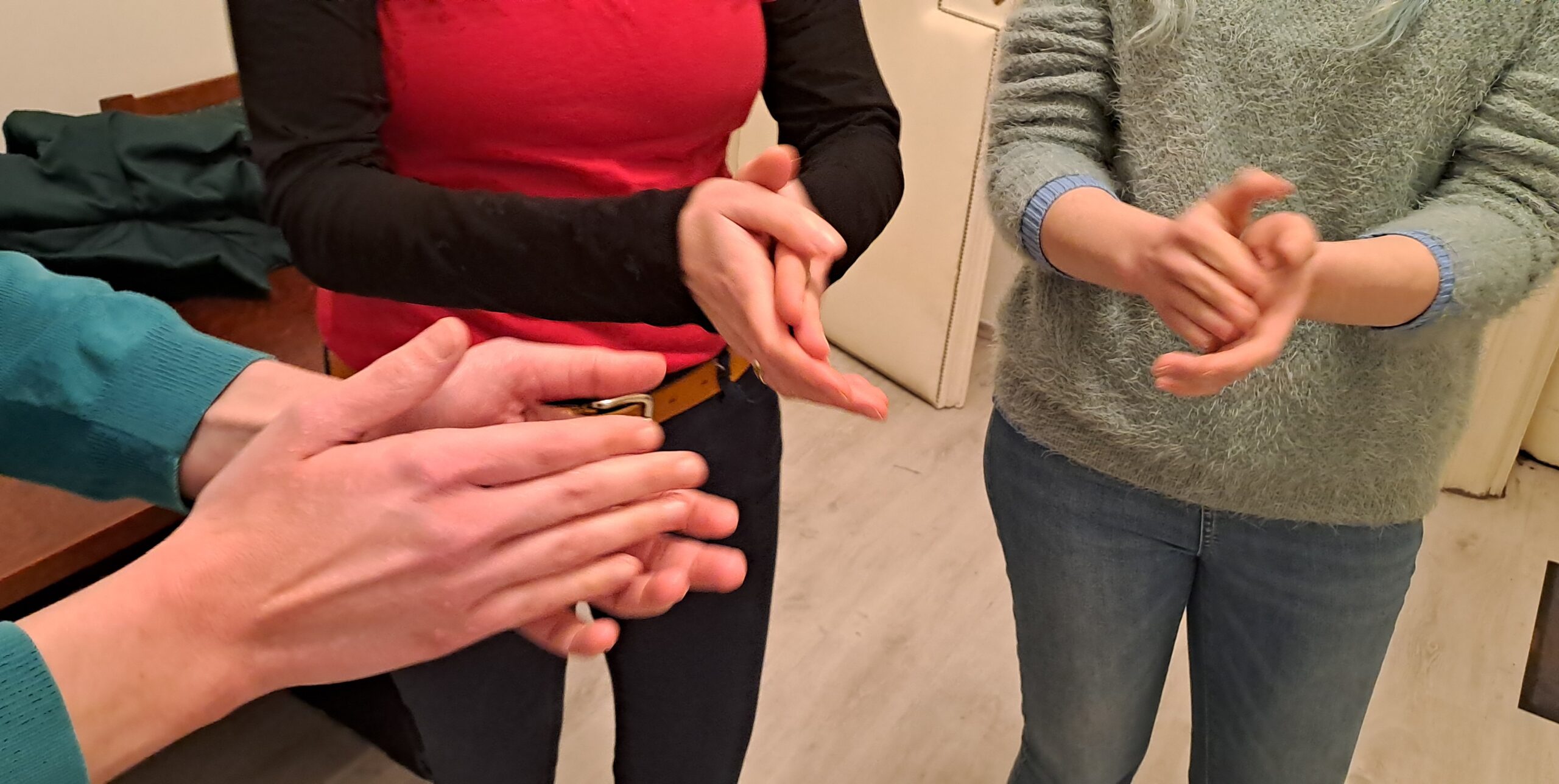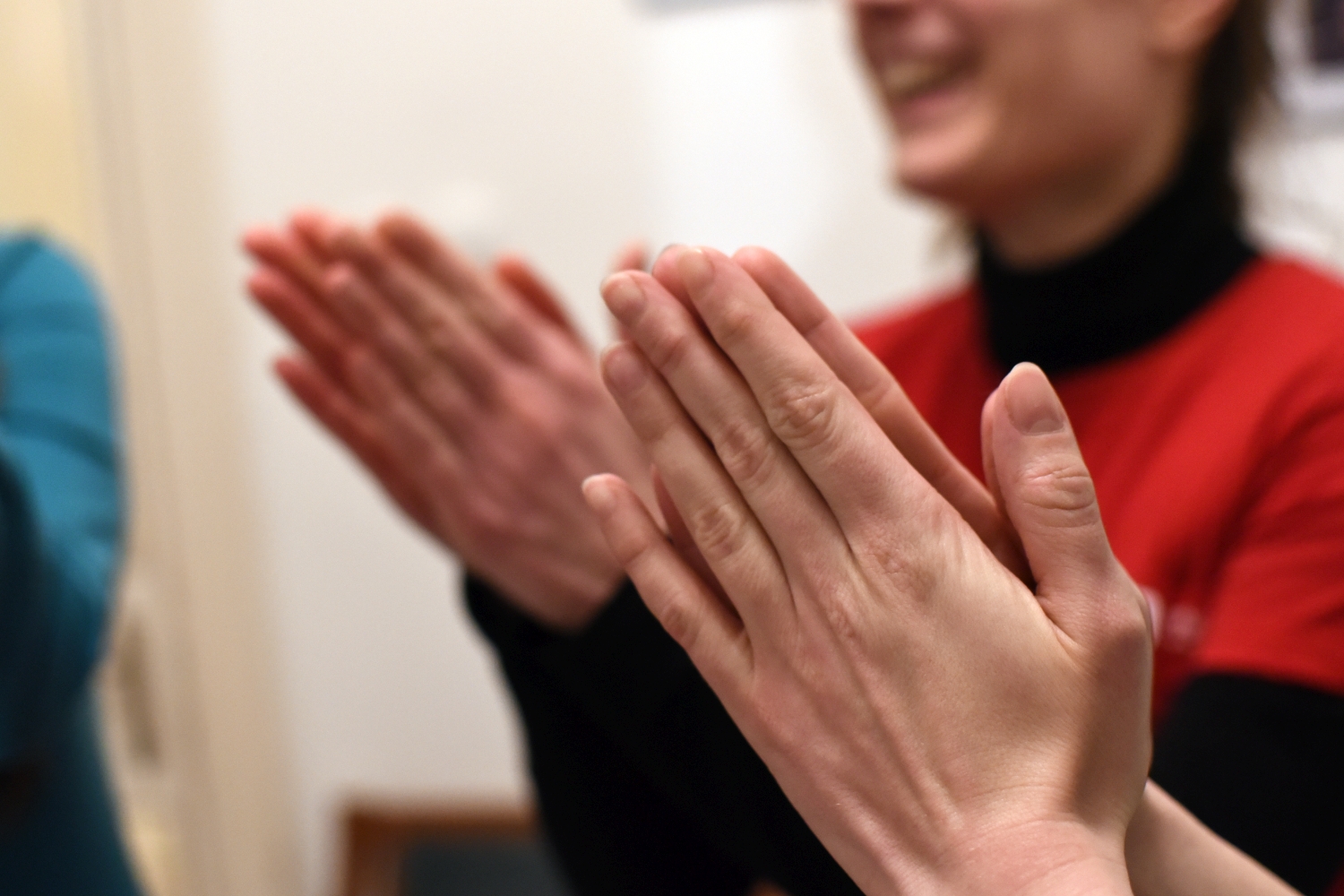1 clap 2 claps
16

Category
rhythm
Age
8+
Number of participants
8-25
Duration
approx. 15 min.
Working method
group work
Musical abilities of the trainers
12 3 4 5 6
Competences
- collaboration
- attention
- concentration
- rhythm recognition
1 clap 2 claps
A rhythm based game with focusing on quick reaction.
AIM
This energizer game’s main goal is to keep the participants in deep focus. It is a competitive game and who has the quickest reaction, wins.
Description
Everybody stands in the circle.
The facilitator explains the task.
The facilitator or the group choose a music to play.
After the music starts the facilitator (or any other previously chosen member of the group) starts to clap to the rhythm of the music. The participant on the facilitator’s left has to clap to the next beat. Then the next participant to the left claps to the next beat. And they keep clapping to the rhythm round the circle one by one.
This way we create a method like playing a metronome.
What makes the task harder: if somebody claps 2 times within one beat, the sequence has to change (if they went from right to left, they have to change it to left to right).
If somebody makes a mistake by clapping not according to the order that participant is out of the circle.
This competition ends when 2 participants remain in the circle.






Recent Comments